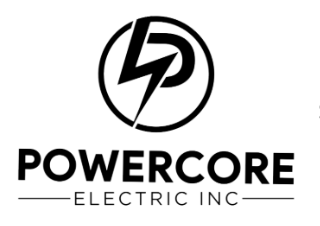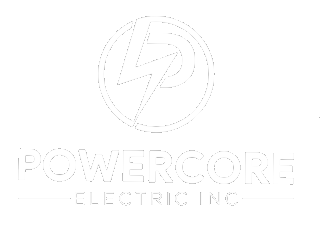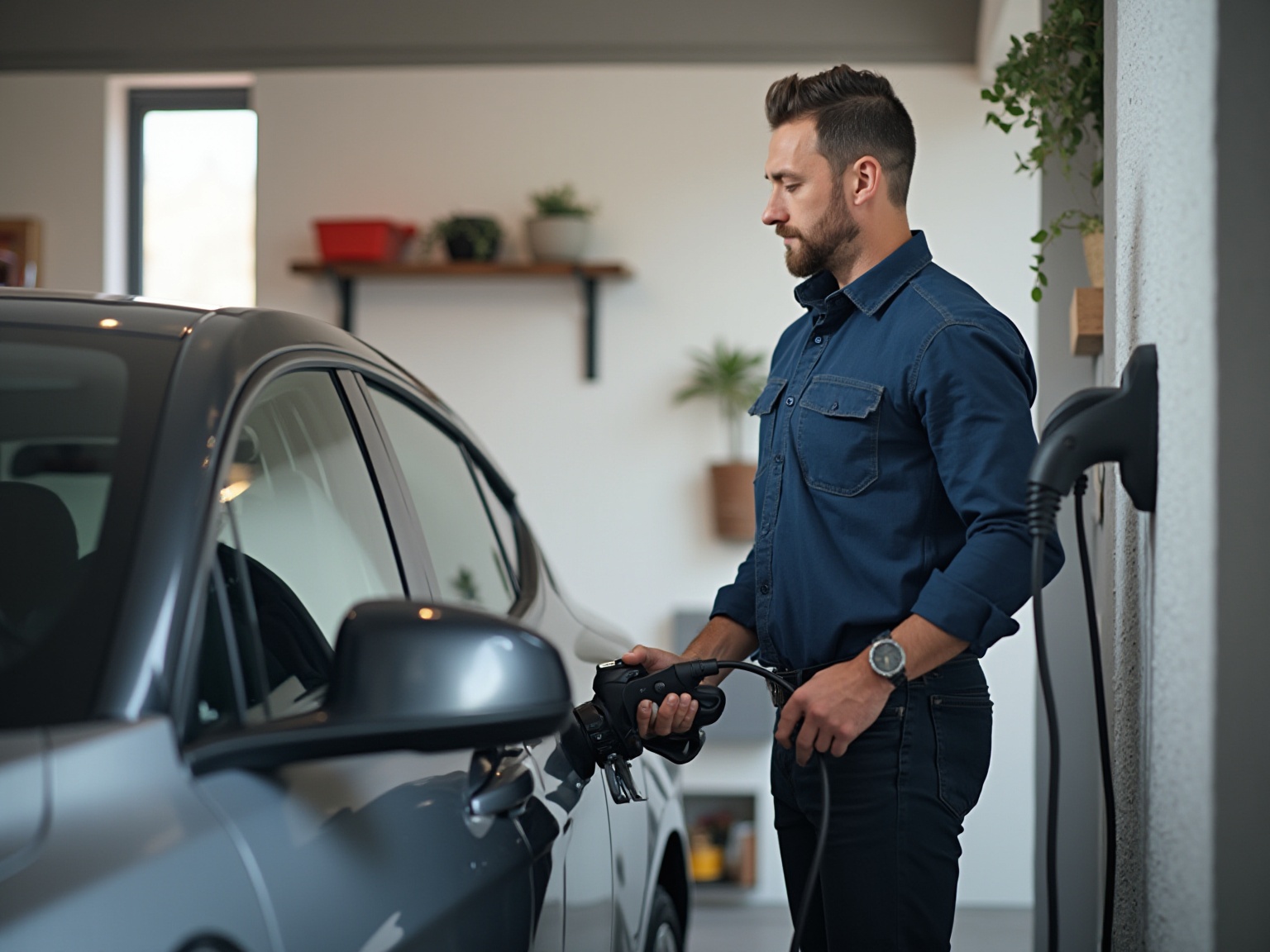Overview
To install an electric car charger, one must assess the home’s electrical system, choose the appropriate charger type, select a suitable location, gather necessary tools, and comply with local regulations. The article outlines these essential preparations and a step-by-step installation process, emphasizing the importance of safety, proper equipment, and adherence to local codes to ensure a successful and efficient setup.
Introduction
Installing an electric car charger at home is an exciting step toward embracing a more sustainable lifestyle, but it can also feel a bit overwhelming. With considerations ranging from assessing your electrical system to choosing the right charger type, the journey requires careful planning and preparation.
Homeowners will find that understanding the costs, navigating local regulations, and selecting the optimal installation location are crucial components that pave the way for a smooth installation process.
This guide will walk through essential steps, tips, and insights to ensure that the transition to electric vehicle charging is not only efficient but also tailored to individual needs. By following these guidelines, homeowners can confidently take charge of their EV charging solutions and contribute to a greener future.
Essential Preparations for Electric Car Charger Installation
Before you roll up your sleeves and start installing your electric vehicle charging station, it’s important to make some essential preparations that will set you up for success:
- Assess Your Electrical System: First things first, take a good look at your home’s electrical capacity. You want to ensure it can manage the additional load from your EV. If you’re not quite sure where to begin, don’t hesitate to consult a qualified electrician for guidance. At Powercore Electric, we specialize in ensuring your system is up to the task to install an electric car charger, allowing you to charge with confidence. Remember, with the Australian Government’s recent AUD 39.3 million investment in constructing EV stations along national highways, the significance of strong home power solutions is more essential than ever.
- Determine Charging Device Type: Next, you’ll need to decide between a Level 1 device (which uses a standard outlet) and a Level 2 device (which requires a dedicated circuit). If you’re looking for faster charging, Level 2 is the way to go. Think about how quickly you want to charge your vehicle and what works best for your lifestyle.
- Select a Suitable Location: Finding the right spot for your device is crucial. Aim for an easily accessible location close to your parking area, and if possible, pick a sheltered spot to protect it from the elements.
- Gather Necessary Tools: Before you start, make sure you have all the tools you’ll need—think drill, screwdriver, and your safety gear. Having everything prepared will make the setup process much smoother.
- Review Local Regulations: Lastly, brush up on any local regulations or homeowners association guidelines related to how to install an electric car charger. It’s important to comply with these rules to avoid any potential issues down the road.
- Testing and Commissioning: After installation, it’s crucial to rigorously test the station to ensure it’s functioning optimally before using it. This step is vital for safety and efficiency.
In addition, consider the insights from Scott Hinson, , who noted that charging behaviors can become habitual over time. This is a significant factor to consider when evaluating your home electrical system and planning for your device’s usage.
Lastly, be aware of the interoperability challenges highlighted in the case study on EV integration. At Powercore, we guarantee that your home electrical system is suitable for your EV and power source, essential for effective setup and functioning.
By adhering to these steps, you’ll be well on your way to a successful EV power source setup that meets both your needs and local requirements, supported by our comprehensive setup services at Powercore. For more information or to schedule an installation, please contact us at ryan.serrano@powercoreinc.net or call (916) 699-8778. Additionally, explore our other offerings, including solar panels and battery backups, to enhance your home’s energy solutions.
Step-by-Step Installation Process for Your EV Charger
Setting up your vehicle’s power station can be a fulfilling task, particularly when you adhere to the best guidelines established by Powercore. Here’s a straightforward guide to set yourself up for success:
- Turn Off Power: Safety first! Begin by switching off the power at your circuit breaker. This crucial step ensures you’re working in a safe environment.
- Site Assessment: Before you begin, it’s wise to assess the best location for your charger. If you’re unsure, consider reaching out to Powercore Electric for a professional site assessment to determine any electrical requirements.
- Mount the Charger: Use a stud finder to locate the wall studs in your garage or designated charging area. Once you’ve located them, securely attach the power supply following the manufacturer’s instructions.
- Run Electrical Wiring: Select the appropriate gauge wiring to connect the charger to your electrical panel. If this part feels a bit daunting, don’t hesitate to call in a licensed electrician—they’re your best ally for ensuring everything is up to code.
- Electrical Upgrades (if necessary): Depending on your existing electrical infrastructure, you may need to upgrade or modify it to accommodate your new charging station. Powercore Electric can assist with this process to ensure safety and compliance.
- Connect the Power Supply: Carefully connect the wiring to the power supply terminals. It’s important that all connections are tight and properly insulated to avoid any issues later on.
- Restore Power: Once everything is connected, turn the power back on at the circuit breaker. Give your device a test run to ensure it’s operating as it should.
- Testing and Commissioning: After installation, we rigorously test the station to ensure it’s functioning optimally before handing it over to you.
- Finalize Setup: Don’t forget to follow any additional setup instructions from the power supply manufacturer. This might include connecting to a mobile app for more features and monitoring.
With Delaware’s refueling infrastructure expanding by over 42%, as noted by Zutobi, now is the perfect time to consider installing at your own home. The case study titled “Delaware’s Commitment to EV Infrastructure” illustrates how this expansion is essential for supporting the increasing number of electric vehicles on the road. As you embark on this project, remember that 44% of EV drivers in a recent European survey noted they didn’t have a home charging station, emphasizing the significance of homeowners who install an electric car charger and lead the way toward a greener future!
Ready to make the switch to electric vehicles? Contact Powercore Electric today to learn more about our EV charging solutions and how we can help you embrace a cleaner, more sustainable future.
Understanding the Costs of Installing an Electric Car Charger
Choosing to install an electric car charger in your home can be a smart choice, and understanding the associated costs is crucial for planning your budget. Here’s a friendly breakdown of what you can expect:
- Charging Device Cost: The price of the charging device itself can vary widely, typically ranging from $300 to $1,200. Your choice will depend on the type of charger and the features you prefer.
- Setup Fees: Professional setup is another important aspect to consider, which can range from $200 to $1,000. This range largely depends on the complexity of the installation and the local labor rates in your area.
- Electrical Upgrades: If your home’s electrical system requires upgrades to support the charger, you might need to budget an additional $500 to $2,000. Ensuring your system can handle the extra load is essential for safe and efficient charging.
- Permits: Don’t forget about permits! Some areas require them for installation, which can cost anywhere from $50 to $200. It’s a small investment to ensure everything meets local regulations.
- Incentives: Finally, be sure to check for local or state incentives. Many regions offer tax credits or rebates for installing EV chargers, which can significantly offset your costs. For instance, [Florida, which led the nation in installing solar utility-scale projects in Q1 2023](https://qmerit.com/blog/florida-electric-vehicle-and-electrification-statistics), is seeing the benefits of a thriving renewable energy sector that contributes to and supports electric vehicle adoption. As Matt Yantakosol notes, “On the high end, California averaged 32.56 cents per kWh while Louisiana and Utah averaged under 12 cents per kWh,” highlighting the variability in costs across states.
In addition to these costs, Powercore Electric Inc. offers a range of services to help homeowners transition to electric vehicle charging and renewable energy solutions. Their services encompass solar panel setups, battery backups, and general electrical work that can improve your home’s energy efficiency. Furthermore, considering solar-powered heating solutions can provide additional savings and sustainability benefits for California homeowners.
By considering these expenses and investigating possible incentives, you can make informed choices regarding how to install an electric car charger for your electric vehicle setup while also aiding in a more sustainable future. The case study on the solar sector’s role in EV adoption demonstrates how Florida’s solar programs are directly influencing the uptake of electric vehicles, motivating homeowners to explore solar alternatives alongside their power source setup.
Navigating Permits and Compliance for EV Charger Installation
Navigating the permits and compliance to install an electric car charger for your EV station can feel overwhelming, but with a little guidance from Powercore Electric Inc., you can make the process a breeze. Here’s how to ensure you’re on the right track:
-
Check Local Regulations: Begin by investigating your local building codes and regulations specific to EV charger setups.
Most of this information is readily available on your city or county’s website, making it easy to find what you need. Given that there are currently no national standards for EV charging stations, understanding your local regulations is crucial to avoid inconsistencies and ensure compliance.
-
Obtain Necessary Permits: Before you begin your setup with Powercore Electric Inc., be sure to apply for any required permits.
This could encompass electrical permits or certain EV charging setup permits, based on your location. Remember that as of 2022, over 20% of public EV charging ports in the U.S. were DC fast devices, highlighting the growing importance of compliant installations.
-
Consult with Experts: If you’re feeling unsure about the requirements, don’t hesitate to contact Powercore Inc.’s licensed electricians or contractors who specialize in EV power equipment setups.
Their expertise can help you navigate the complexities and ensure everything is up to code. As noted by (EVITP), it’s crucial that all electricians involved in the installation are certified to ensure safety and compliance.
-
Schedule Inspections: After your device is installed, some jurisdictions may require an inspection to verify compliance with safety codes.
Be sure to verify if this step is necessary in your area.
A great example of effective EV station integration can be seen in the Green Rock Apartments case study. This multifamily housing project successfully navigated the procurement process for electric vehicle power supply infrastructure, serving as a model for other developments by demonstrating compliance with local regulations and effective setup practices. By following these steps with the assistance of Powercore Energy Inc., you can ensure that you can successfully install an electric car charger that is smooth, compliant, and ready for use!
Additionally, charging your electric vehicle at home not only simplifies the process but can also lead to significant cost savings over time. For more information or assistance, contact Powercore Electric Inc. at ryan.serrano@powercoreinc.net or call (916) 699-8778.
Choosing the Right Charger and Optimal Installation Location
Selecting and deciding where to install can seem like a challenging endeavor, but it doesn’t need to be! Here are some friendly tips to help you navigate this process:
-
Take a moment to consider your driving habits. How often do you hit the road, and what’s the typical range of your electric vehicle? Comprehending this will assist you in choosing the appropriate type of power supply and level that suits your lifestyle. For instance, EA 350 kW devices have experienced peak utilization of 17%, which highlights the importance of selecting a unit that meets your specific charging needs.
-
Research Power Supply Options:
With a variety of devices available, look for features that align with your daily routine. Do you want WI-Fi connectivity for remote monitoring, app integration for easy access, or smart home compatibility? Popular brands like ChargePoint and Tesla offer a range of options that cater to different preferences and needs. As consultant Ali Tanweer notes, “The only question that remains is how quickly industry stakeholders will act to meet consumer expectations,” emphasizing the need for informed choices.
-
Consider Installation Location:
When it comes to how to install an electric car charger, convenience is key! Choose a spot that’s easy for parking and minimizes the length of the charging cable. The perfect site is near your electrical panel, which can help reduce costs and guarantee a hassle-free setup. Powercore Electric Inc. provides expert installation services to ensure you can install an electric car charger correctly and efficiently.
-
Assess Environmental Factors:
Lastly, don’t overlook the surroundings around your power station. Choose a spot that protects your charger from severe weather conditions, ensuring it stays safe and provides a pleasant power supply experience. Furthermore, take into account the increasing consumer inclination towards renewable energy alternatives, as emphasized in the case study ‘Willingness to Pay for Green Charging,’ where 55% of survey participants indicated that green energy from renewables is significant.
For additional details on our EV charging station services or to arrange a setup, reach out to Powercore Electric Inc. at ryan.serrano@powercoreinc.net or call (916) 699-8778. By following these steps, you’ll be well on your way to selecting the perfect location to install an electric car charger for your electric vehicle, making the transition to eco-friendly driving a breeze!
Conclusion
Installing an electric car charger at home is a significant step towards a more sustainable lifestyle, and the journey can be both rewarding and manageable when approached thoughtfully. By assessing your electrical system, determining the right charger type, and selecting an optimal installation location, homeowners can set the stage for a smooth installation process. Each of these steps contributes to ensuring that the charger meets individual needs while adhering to local regulations.
Understanding the associated costs is equally important. From the charger itself to installation fees and necessary electrical upgrades, being well-informed allows for better budgeting and planning. Additionally, exploring potential incentives can further alleviate financial burdens, making the transition to electric vehicle ownership more accessible.
Navigating the permits and compliance requirements may seem daunting, but with the right guidance, it becomes a straightforward task. Consulting with professionals and staying informed about local regulations will ensure that installations are not only compliant but also safe and efficient.
Ultimately, the decision to install an electric car charger is not just about convenience; it’s a commitment to a greener future. By taking proactive steps in this direction, homeowners not only enhance their own driving experience but also contribute to the collective effort of promoting sustainable energy solutions. Embracing this change can lead to a cleaner environment and a brighter future for all.


